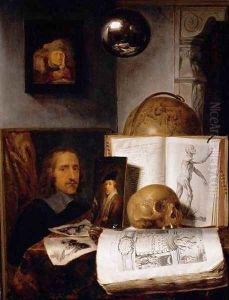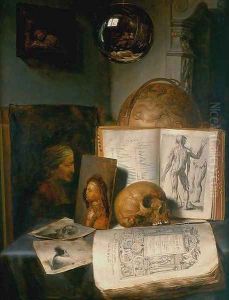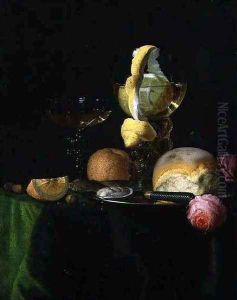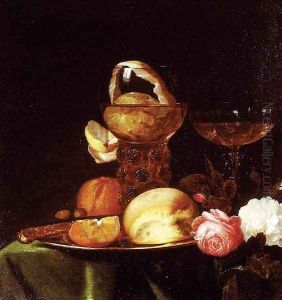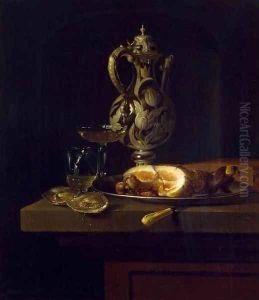Simon Luttichuijs Paintings
Simon Luttichuys (also spelled Luttichuijs, Lutichuys, or Luttigheus) was a Dutch Golden Age painter born in London in 1610. Despite his birth in England, he is often classified among Dutch painters due to his significant presence and influence in the Dutch art world. He moved to Amsterdam with his family when he was still a child, and it was there that he developed his career as an artist. Luttichuys became known for his portraits and still-life paintings, which were highly regarded for their meticulous detail and subtle use of light.
Luttichuys' style was greatly influenced by the works of fellow Dutch artists, which is evident in the realism and precision found in his paintings. He was particularly noted for his skill in capturing the textures of materials, from the softness of skin to the sheen of metal and glass. His still lifes often included a variety of objects such as fruits, flowers, and shells, which were rendered with a high degree of naturalism.
During his lifetime, Luttichuys enjoyed success and was a respected member of the art community. His works were sought after by wealthy patrons, and he was able to build a prosperous career. Unfortunately, much of his life's details remain obscure, and he did not leave behind a large body of work, which has led to him being less well-known than some of his contemporaries.
Simon Luttichuys died in Amsterdam in 1661. His legacy lives on through his surviving paintings, which continue to be studied and admired for their beauty and craftsmanship. While he may not be as famous as some of the leading figures of the Dutch Golden Age, such as Rembrandt or Vermeer, Luttichuys' contributions to the era's artistic developments are nonetheless significant, and he holds a place as a notable artist of his time.
